
- Travel info
- Eurostar experience
- The channel tunnel
The Channel Tunnel
Discover the history and fun facts about the chunnel which has been in operation since 1994.

What is the Chunnel?
The Channel Tunnel (often called the 'Chunnel' for short) is an undersea tunnel linking southern England and northern France. It is operated by the company Getlink, who also run a railway shuttle (Le Shuttle) between Folkestone and Calais, carrying passengers in cars, vans and other vehicles.
Eurostar is a totally separate company and is Getlink’s biggest customer, running high-speed passenger services through the Channel Tunnel between London and a number of other European cities on the continent, including Paris, Brussels, Lille, Amsterdam and Rotterdam.
The Chunnel actually comprises three tunnels: two rail tunnels, used for freight and passenger trains, and a service tunnel.
Everything you need to know about the Channel Tunnel

How long is the Channel Tunnel?
The Channel Tunnel is 31.5 miles long or 50.45 km. That's the equivalent of 169 Eiffel Towers stacked on top of each other.
23.5 miles (37.9 km) of the Channel Tunnel is under the English Channel, making it the world's longest undersea tunnel.

What year did the Channel Tunnel open?
The idea of a tunnel under the Channel was first proposed in 1802 but construction wasn't started until 1988. It was completed in 1993, and Eurostar services started in November 1994.
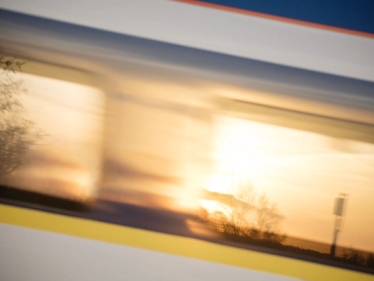
What does the Eurotunnel look like underwater?
This may be a disappointing answer, but you can't actually see the sea from the Eurostar. When you go through the tunnel and look out of the window, all you can see is your reflection in the glass because it's quite dark outside. You can catch glimpses of the walls of the tunnel, of course, which are made of reinforced concrete.
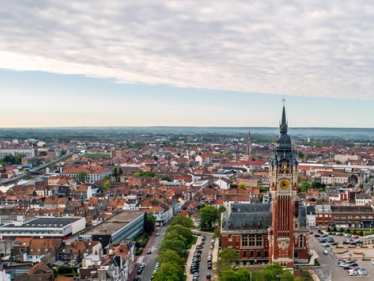
Where is the Channel Tunnel?
The Channel Tunnel runs between Calais in northern France and Folkestone in south Kent. Vehicle traffic for Le Shuttle gets on in Calais and gets off in Folkestone. Calais is about three hour's drive from Paris and Folkestone is about an hour and a half's drive from London.
Our passenger-only Eurostar trains leave from St Pancras International station in London and go directly to the centre of Paris, Brussels and other Eurostar destinations in Europe.
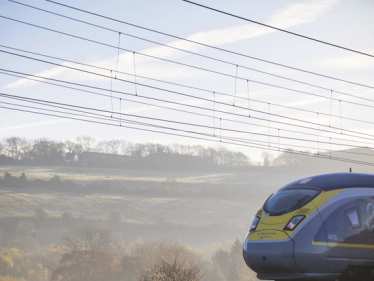
How deep is the Channel Tunnel?
At its deepest, the tunnel is 75 metres (246 feet) below the sea level. That's the same as 107 baguettes balancing on top of each other.
The English Channel is much deeper than the tunnel, with its deepest point measuring 175 meters (574 feet) below sea level.
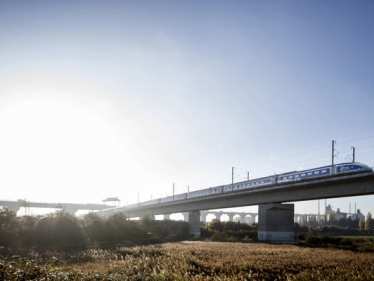
How was the Channel Tunnel built?
The Channel Tunnel is made of three separate tunnels running parallel to each other. One train tunnel running south (UK to France), one train tunnel running north (France to UK) and one service tunnel. All three tunnels were drilled below the seabed and link Folkestone in Kent to Coquelles in Pas-de-Calais.
However, the idea of connecting the UK and France by tunnel is much older than people think – dating back to the early 1800s when its supporters included Napoleon Bonaparte.
Work on experimental tunnels started back in 1880 at Abbot’s Cliff near Folkestone, Kent. Many of the workers used hand tools, but a state-of-the-art boring machine was also used. Work was eventually abandoned until construction on the tunnel as we now know it began again in 1988.
Frequently asked questions
Thinking of hopping on Eurostar for your next European adventure? Got a couple of need-to-know questions before you book your trip? Here we’ve answered a selection of the most frequently asked questions from our customers.

Who can travel through the Channel Tunnel?
Foot passengers can travel with Eurostar, between our UK stations London St Pancras International and our stations on the continent . People who want to travel with their own vehicle or on a coach can use the Eurotunnel Le Shuttle between Folkestone and Calais. Before travelling with either Eurostar or Eurotunnel you will need to go through security, border and ticket checks before going through the Tunnel.

How much did it cost to build the Channel Tunnel?
It took just under six years and 13,000 workers to build the Channel Tunnel. The total cost came at an eye-watering £4.65 billion which would be the equivalent of £12 billion in today's money.

Why travel with Eurostar rather than drive?
- Avoid the stress of driving, with direct high-speed journeys to top destinations, from city centre to city centre.
- Great value fares with no additional costs like fuel, road tolls and parking.
- Simple connections with other rail services in Europe, allowing you to go beyond our direct destinations on a single booking.
- Travel in style on our comfortable trains, including our new, state-of-the art trains with wi-fi.
How fast does the Eurostar go?
The Eurostar travels through the Channel Tunnel at a speed of 100 miles per hour (160kph) although when the train is outside the tunnel it reaches speed of 186 miles per hour (300 kph).
You may also like
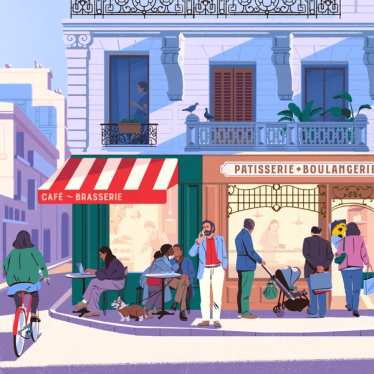
Direct
London to Paris trains
Taking the Eurostar from London to Paris is quick, easy and enjoyable. Journey from one world-famous capital city to another in just 2hrs 16 mins.

Direct
London to Brussels trains
From comic books to Dutch masters, art nouveau style to ultra-modern, delicious chocolate truffles, hearty ales, Brussels is a city of curious contrasts.

Direct
London to Amsterdam trains
With its canals, cobblestone quays and buzzing art scene. Amsterdam is the perfect city for a weekend of culture.





